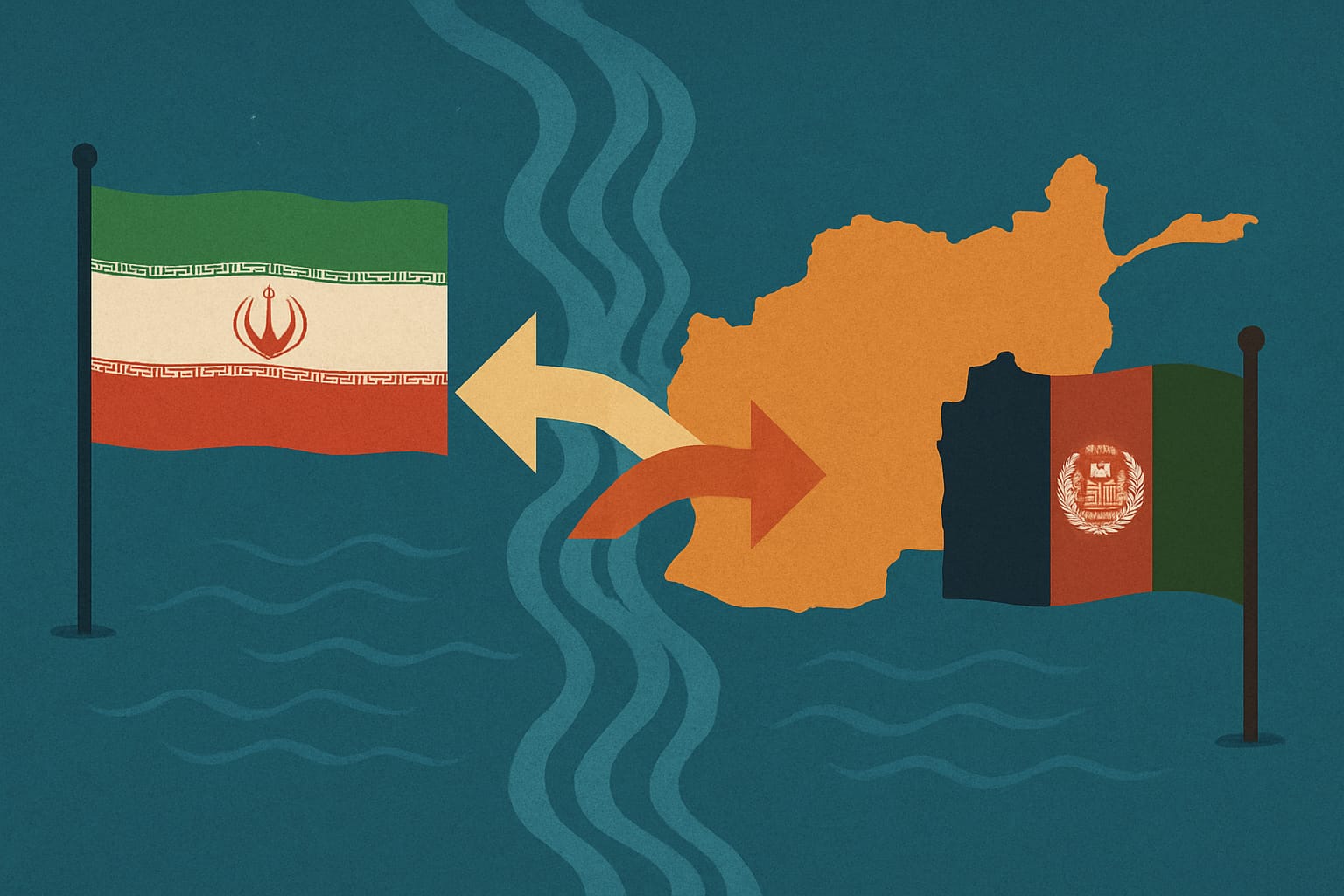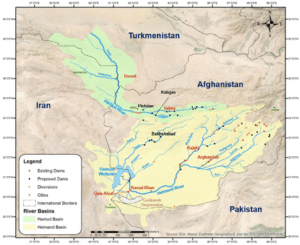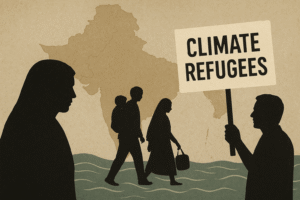Water at the Crossroads: The Potential for Conflict and Cooperation for Iran and Afghanistan

Water at the Crossroads: The Potential for Conflict and Cooperation for Iran and Afghanistan By Global Stratagem Insight
Transboundary water resources have historically served as catalysts for both conflict and cooperation among riparian states. There are at least 260 transboundary river basins globally, 35 percent of which have been unable to resolve their conflict. On the other hand, at least 200 transboundary water treaties have been signed since 1950s for cooperation on shared water sources. Research suggests that transboundary conflicts are more often caused by poor governance than scarcity of water. For decades, the mutual relations of Iran and Afghanistan have been strained by tensions over shared water basins; Helmand and Harirud. While a bilateral treaty exists on Helmand River, a formal agreement is still lacking on Harirud River.

(Source: Research Gate)
According to a 2020 US Institute of Peace report, the water conflict among states or communities primarily originates from factors such as climate change, artificial water structure, increasing user demands, or politicization of water issue. These variables have been negatively affecting the water sharing situation in Iran (lower riparian) and Afghanistan (upper riparian).
In the past thirty years, Iran has warmed by almost 2.7 degrees Celsius, approximately double the global average rise. In the year 2024, most regions of Iran, excluding some regions of northwest, experienced consistent positive temperature anomalies. Between years 2021-2025, Iran experienced five consecutive droughts.
Between the years 2009 to 2016, the mean annual temperature rose by 1.2 degrees Celsius in Afghanistan. In the year 2022, Afghanistan experienced one of worst droughts in the last thirty years. The UN has ranked Afghanistan as one of the ten countries most vulnerable to climate change.
Research suggests that the water conflicts exacerbate when one country builds water infrastructures on shared resources without consulting the other. Iran is the third country, following China and Japan, to build excessive water infrastructure. Afghanistan has built several dams such as Kamal Khan, Kajaki and Salma dams over the past decades on shared water sources. The Kabul leadership indicates towards building more dams in the future. Both countries have constructed such infrastructure without consulting the other riparian, adding to the political tension and mistrust. Moreover, the alarming rise in population in both countries has put further pressure on the water sources which eventually effects public livelihoods, putting agriculture, health and lives at risk.
The Afghan authorities argue that they are entitled to manage the flow of rivers as they originate from their country. They further claim that Iran has utilized more water in the past than agreed in Helmand Treaty (1973) due to unrest in Afghanistan and unavailability of water infrastructures. Moreover, they assert that Iran has built more than 30 dams on lower part of shared rivers violating the Helmand Treaty.
Iranian officials, on the other hand, argue that current dam building by Afghanistan violates the Helmand Treaty and disrupts water flow to areas of Sistan-Baluchestan and Khorasan provinces. The lack of reliable scientific hydrological data and joint measurement mechanisms for water level makes the verification of such claims impossible. This enables the nationalistic rhetoric where both sides blame the other party for water mismanagement, deflecting the public attention from maladministration. In May 2023, these tensions escalated into a military clash along the Iran-Afghan border, a stark reminder of how environmental stress can turn into a geopolitically volatile situation.

(Source: Al Jazeera )
While both countries have a long history of water dispute, there are several examples of notable, but limited, cooperation and expression of goodwill. The 1973 agreement is considered a landmark agreement in the history of water disputes. Both countries have worked together with United Nations to revive the Hamoun Lake in 2003. Following the visit of Afghanistan’s acting Foreign Minister Amir Khan Mutaqqi to Iran in 2022, the Taliban opened up the Kamal Khan dam to increase the water supply to Hamoun Lake in Iran as a gesture of goodwill. Iran has shown willingness to provide Afghanistan with the necessary technical assistance in agricultural and water sectors. Additionally, in November 2023, during the summit of Economic Cooperation organization (ECO), the then President of Iran, Ebrahim Raisi committed to provide humanitarian aid to people of Afghanistan.
While water scarcity is a matter of sustainable development, the rhetoric and blame game has politicized the issue. This has not only deepened the mistrust between the both countries but also prevented effective policy responses. Such nationalistic rhetoric may help in achieving short-term public support but delays to address the long-term water crisis. Failure to address this may result in more border skirmishes, displacement, internal unrest and humanitarian crisis in the future.
To resolve the crisis, the first step for both countries is to consider water as a shared source, instead of a sovereign asset. It is also necessary to develop a sustained framework where both countries can jointly manage Helmand and Harirud river basins. It is crucial to install mechanisms for joint data sharing to monitor water availability. Globally, there are examples demonstrating how joint cooperation on shared water basins has resulted in the mutual benefits of all the stakeholders. The joint management of Columbia River by US and Canada has helped control floods and produce electricity. The sustainable management of Rhine River by six European states has helped revive salmon populations which had become extinct. Iran and Afghanistan could similarly cooperate to manage the prevalent problems such as dust storms, drought, and degradation of water resources.



